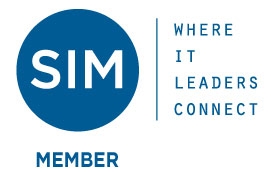 Jobs that computers won’t take…
Jobs that computers won’t take…
With 2017 gone, now is a good time to look ahead. Not a few weeks or months into the future, but a decade – from a veteran IT Recruiter’s perspective. I’m one of those who began recruiting after emerging from a career as an IT practitioner. Approaching 30 years ago tools consisted primarily of the phone, a phone book, a notebook, and index cards. Calling the mailroom was a huge networking tool. The art of truly building relationships preceded ‘friending’ on social media. The Monsterously Monsterous Job board to replace newspaper ‘help wanted’ sections was still a thing of the future.
Since then technology has helped segment, sort, store and retrieve keywords immensely. Please note however that keywords do not equate with qualifications. In terms of matching people to jobs I’ve often said, if people could pick people there wouldn’t be a 50% divorce rate. Technology hasn’t advanced the nuances of matching career growth with organizational business challenges either. Mostly because the right questions are not yet readily generated by computers, and the proliferation of uncounted social media platforms has diluted the talent of ‘ole fashioned relationship building.
Looking ahead 10 years, extraordinary changes in everyday life can be foreseen. New technologies, new habits, new ways of working. Many old problems solved. A higher standard of living. Better health. Lab-grown body parts will be widespread. Injecting healthy cells
into damaged tissues to repair them, rather than replacing them. Cures for many devastating genetic illnesses could be within reach. More and better food options for all. Blazing-fast internet will be everywhere. And don’t forget the gadgets: Watches that give detailed health advice. Headphones to translate foreign languages in real time when traveling abroad. Virtual-reality goggles that look like chic eyeglasses. But even the march of progress brings new challenges.
The workplace of the future will be far more efficient, thanks to automation. The amount of automation on tap in the next 10 years is simply stunning. Half of today’s jobs are ripe to be automated to some degree by computers or smart machines that take on increasingly complex tasks now done by humans. The force powering the rise of automation: Artificial intelligence…software that isn’t just programmed to do a preset job but can actually learn new functions the way that a human mind does. In its infancy now, AI will grow by leaps and bounds by 2027, as more-powerful computer chips crunch exponentially larger troves of data.
Yet will how we define, identify, select, and attract people to do these changed jobs, change much? From a 2017 perspective, I sure hope so!
Yes, AI has advanced to recruiting ‘bots’ where specific qualifications for high demand positions like truck drivers. Screening for a Commercial Driver’s License (CDL), routes and loads driven, years’ experience, CDL rule violations etc. can quickly identify applicants, IF they apply. Not so easy for roles that require human communication, filtering of complex information, and development of new processes and devices – let alone leadership of those. Other low-skill jobs in general are most vulnerable to elimination by automation.
Readers having experienced the gambling of online application submission are second in risk only to the world’s largest casino – the New York Stock Exchange. Your resume is sliced and diced into keywords through rudimentary algorithms and stuffed into an Applicant Tracking Systems. Thereafter you become a commodity to be evaluated by someone who may not know the difference between a server and a waiter – let alone and understanding of how a successful candidate will be measured in solving the business challenge as a cause for the requisition. Quite frankly and ATS cannot measure the three most important hiring criteria; intelligence, character, and motivation.
To further illustrate the problem, respondents to a job advertisement are active candidates searching for a new opportunity. Maybe they are 15-20% of the qualified population. The job descriptions don’t typically list the priority of desired skills. Even more rarely is the ‘sell’ of new skills they could learn and grow with illustrated. So you miss 80% of the more passive market. The top 10% of ‘A-Players’, the movers and shakers, see no reason to move without career growth that makes them who they are and have proven to be.
The information trove and interconnected history of people, organization mergers/acquisitions, technology and process synonyms, logical and disparate career paths, new and emerging jobs and titles and myriads of human tendency details can certainly be loaded into data bases and manipulated with AI code. Yet how will those A-players be tapped to realize those future business benefits? Computers in a network only need the trust of security to communicate. People need trust. Trust takes time, integrity, and a demonstrated track record of building relationships. It’s not who you know, but who knows you that can do something for you.
Veteran ‘headhunters’ don’t just know a lot of people. They have a cache of trusted relationships far more valuable than most computer networks. They are always in the market piecing together trends and ‘inside information’ to distill. Of course they use ATS’s and forage in social media, consume industry publications, and belong to and become active in their industry professional associations. Because they compost this information, they can more reputably acquire new timely information when needed. Trusted headhunters also have their network of other trusted headhunters, effectively multiplying their influence.
So, back to the future. Will the coming flood of automation be too much of a good thing? Will human workers become obsolete? No, far from it. Although many jobs are sure to diminish or disappear entirely because machines can do them better, many others will become more important…and better-paid…because of the need for human insight and ingenuity that future computers won’t be able to emulate.
Consider the skills and traits that aren’t ripe for automation: Judgment. Creativity. Social awareness. General intelligence. Such hard-to-define qualities aren’t easily programmable. Young folks with an eye on their long-term careers will do well to cultivate them, no matter what type of specific job they aspire to. Examples of jobs that computers won’t take: Teacher. Lawyer. Doctor. Manager…. and Professional Recruiter.













Comments are closed.